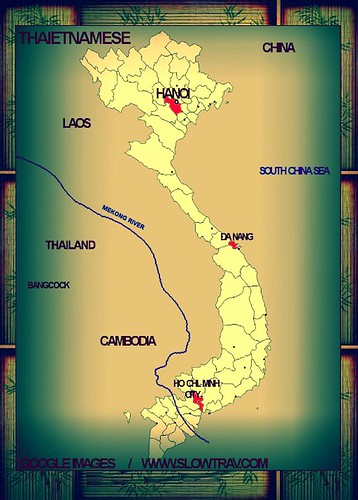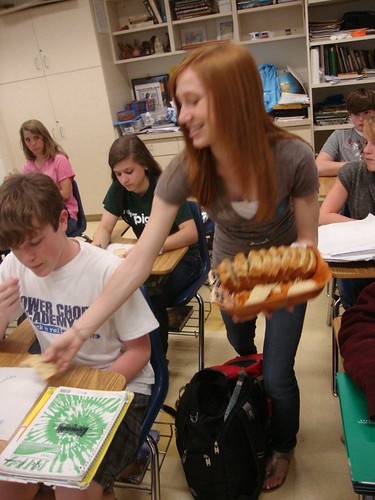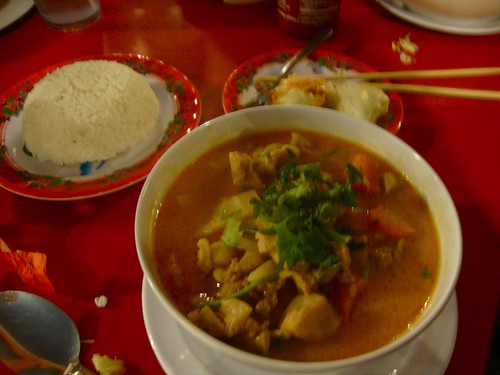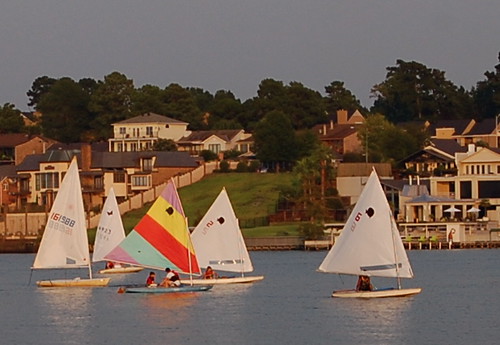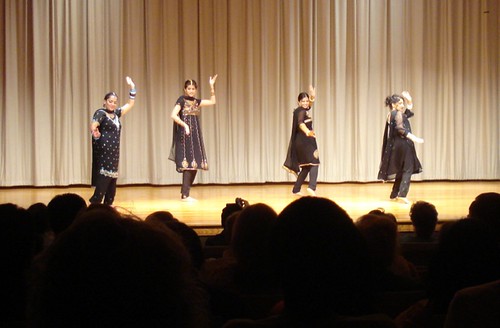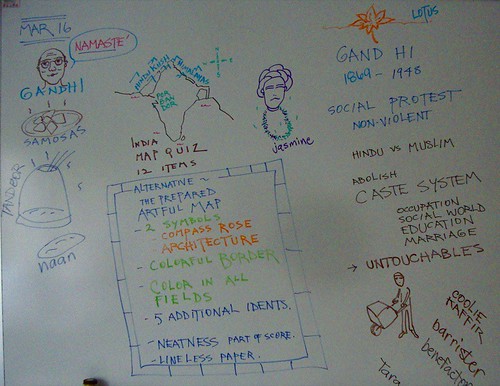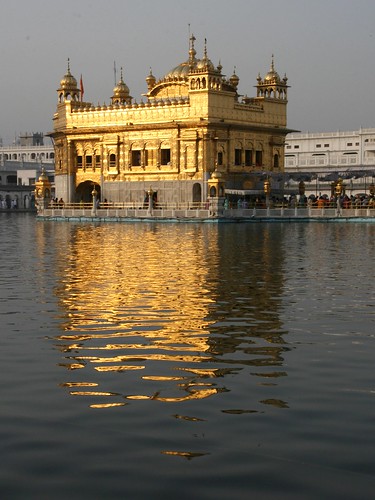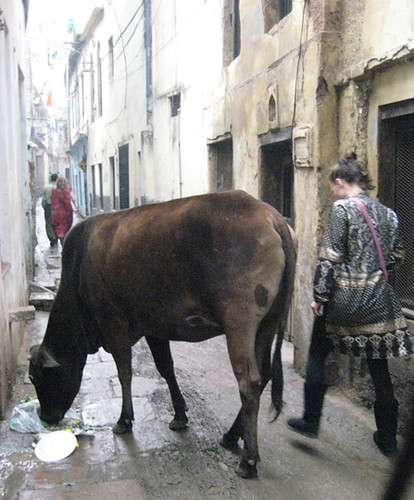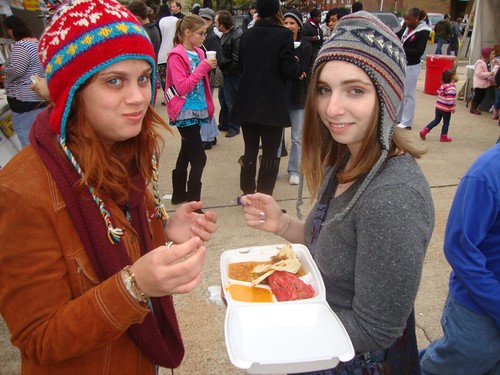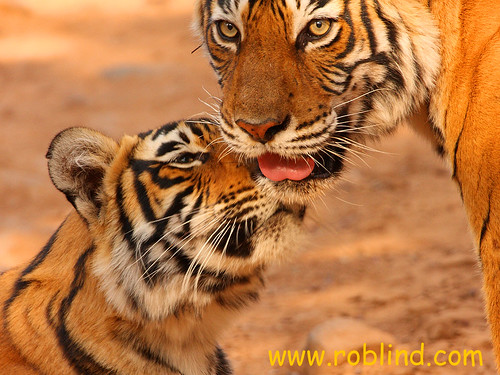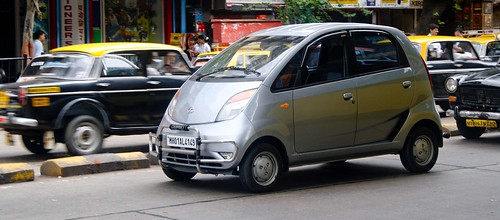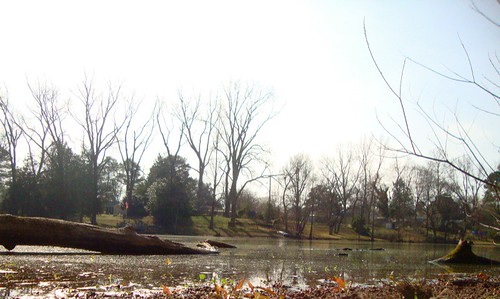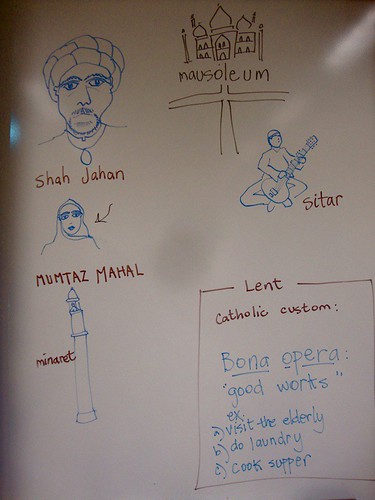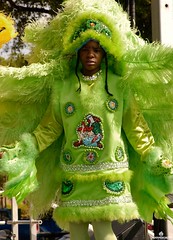Make a powerpoint-type presentation including -
- map of Vietnam and neighbors
- image from US Conflict / 1960's
- 3 images of Vietnamese people
- 1 image of mountains
- 1 of the seacoast
- 1 of a Viet boat
Add 2 brief notes on each image.
Add a brief timeline of the US Conflict in Vietnam.
5 pts.
Due at end of period.
Friday, March 25, 2011
Intro to Vietnam
Class of 2014 Talent Show performance night scheduled for Tues, April 19, 6:30 pm, PAC
In the Magnet tradition, the Class of 2014 will enjoy the team-building and celebration of talent that comes from producing an all-freshman talent show.
The performance night will be Tues, April 19, 6:30 pm, in the PAC.
We've accepted a Tues night showtime because the Magnet PAC calendar is chock full of activities. This was the best date available when your sponsor visited the school calendar.
Try-outs will be held Th and Fri, Ap 7 and 8, after school - in the PAC.
The week of Rehearsals will be held during testing week: April 11 - 15.
Performers and production staff (set, costumes, sound & lights, etc) will be expected to be present Mon - Fri from 3:50 to 5 pm (or later, on some days).
Teacher sponsors are Robert Trudeau and Ginger Marks.
We welcome all forms of performance talent: readings, acting, martial arts, dressage, etc. in addition to the traditional dancing, playing piano, singing, etc. Please see your sponsors for developing the possibilities.
Wednesday, March 23, 2011
Indie work: Writer's Workshop resumes after the break
A 4 pm meeting keeps me from holding Writer's Workshop this week.
Yet here are topics for brief comparison essays (remember to integrate the topics and document your work) that will earn indie points -
- Japan's tectonic devastation and Egypt's political upheaval.
- Elizabeth Taylor's career and the life of Cleopatra VII of Egypt.
- The US in Iraq and the British in India.
- Gandhi and MLK, Jr.
Remember to use details! Dates! Locations! Numbers! Outcomes!
-
Interview with a veteran of the Vietnam Conflict due Ap 6
One of the most rewarding projects of first-year social studies, according to many students and parents, is the Vietnam Veteran Interview.
The most difficult part of the project is finding a veteran who can be interviewed. I will expect you to get help from your parents, extended family and friends and perhaps your minister or comparable youth leader.
My goal is to see my students sit down across the table from a veteran of a US war in Asia. So, in truth, if you can find a veteran of the Korean conflict (usually older than Viet vets) or even the rare veteran of WWII in the Pacific, you can substitute.
Vietnam is part of America's history that can guide our thinking in regards US involvement in Iraq and Afghanistan.
These Vietnam veteran questions are designed to create a low-stress interview. The primary reason for this interview is to give you experience in using a Primary Source. The material you gather will not come from a book or online entry; it will come from a person who was an eye witness. You will be gathering a bit of evidence as a student historian.
1. Name and your service branch?
2. Year(s) you served in Vietnam?
3. Your responsibilities in the service while in ‘Nam.
4. Locations you visited in Vietnam. In which place did you stay the longest?
5. The geography of the Vietnam you observed.
6. Climate?
7. Describe the people of Vietnam, both physically & psychologically.
8. Changes in your attitude toward the US in Vietnam. (optional)
9. What should teens learn about the conflict?
10. Your favorite movie or book about ‘Nam? (optional)
Type and title, etc etc
12 pts
Due Ap 6.
You may substitute an interview with a veteran of Korea or WWII / Pacific war.
Monday, March 21, 2011
Caddo Magnet High Semester / Final Exam Schedule, May 24 - 27, 2011
Tues, May 24 exams
1st hour, 9:50 - 11:50
3rd, 1:30 - 3:33
Wed, May 25
5th, 9:50 - 11:50
7th, 1:30 - 3:33
Thurs, May 26,
2nd, 9:50 - 11:50
4th, 1:30 - 3:33
Fri, May 27
6th, 9:50 - 11:50
8t, 1:30 - 3:33
Mon, May 30, Memorial Day holiday
Wed, June 1, teacher sign-out day.
Exam guidelines -
- Exam will count for 15% of the semester grade.
- Reports will be mailed on June, 10.
Senior exams May 9 - 11.
India, Hinduism, Taj Mahal & Gandhi Review
1. The three principal gods of Hinduism are Brahma, Vishnu & Shiva . T
2. Many USAF bombing flights directed at Iraq and Afghanistan are launched from an island in the Indian Ocean called Diego Garcia. T
3. Gandhi’s life was lived on 3 continents: Asia, Europe & Africa. T
4. The Taj Mahal (TM) was built about the year 1650 by the Shah
Jahan, Mughal emperor of Northern India. T
5. It was built of white marble (stone) for Mumtaz Mahal, his
principal spouse.T
6. A building that is a tomb is called a mausoleum. T
7. The designers of the Taj were from the nations of Persia (Iran) & Turkey. T
8. There are three items of the Taj Mahal complex that identify the
Shah’s culture as islamic: the mosque, the towers called minarets and
the decorative designs on the walls, called arabesques. T
9. Aside from the decorated caskets of the emperor and his wife the
interior of the Taj Mahal is empty. True
10. In the final chapter of his life the Shah’s son made sure his
father was imprisoned. T
11. In their devotion to family, interest in planning and
architecture, and the extent of their power we can say that Shah Jahan and Gandhi were alike. False / Gandhi did not express an interest in architecture.
12. Gandhi and Shah Jahan lived about a) 300 years apart. a) 300 b) 500 c) 600 d) 800.
13. Hindus believe that man is contained in a nearly endless series of
____ called Samsara. a) rebirths b) conflicts c) religions d) yogas. A
14. Hinduism teaches that the soul never dies. The continuous process
of the soul’s rebirth is called reincarnation. T
15. The highest of the castes is the brahmin. True
16. Hindus believe that the bad actions of your life - or of your past
lives - may hamper you in this life. This is the law of karma. T
17. Caste is your social, job-oriented placement in life. T
18. Doing the work that Indian society sees as unclean is the
responsibility of the untouchable, or Shudra caste. T
19. The Hindu word for teacher or wise man is a) guru b) rupee c)
Sanskrit d) dharma. A
20. The word Om is the eternal word and is written by an Indian
character - in Sanskrit - that resembles the numeral 3. T
21. Hinduism is probably the world’s oldest living religion, according
to World Book. True
22. Hinduism is practiced by about a) 50 million b) 100 million c)
800 million people. C
23. Most Hindu worship takes place a) in the temples b) at home c) under a Bodhi tree. B
24. Gandhi led protests against two of the ways in which the British
took unfair profits from the people of India. He struck back at the
English sale of cloth or textile goods and at their tax and monopoly
on salt . T
25. 4 nations of Central Asia that were controlled by the British
during the empire: India, Pakistan, Bangladesh, Burma, Afghanistan. T
26. In the Middle East the English exerted wide control. Nations they controlled included Iraq, Palestine, Kuwait, Yemen, Jordan.
27. British colonial properties in the Far East: Singapore, Hong Kong, New Guinea, Australia.
28. Two of the British colonial properties in the Caribbean: Bahamas,
Jamaica, Br. Virgin Is., Cayman Is..
29. The elephant-headed god of the Hindus: Ganesh.
30. Two religions of India with small numbers of adherents: Sikhs, Jains.
All statements true unless otherwise posted.
Sunday, March 20, 2011
Mon: Feast of India / or comparison essay
Mon
Feast of India, 12 pts
a) Cook a dish reflective of Indian cuisine
or
b) Write a comparison essay on the elements of Indian cooking or eating.
Please see my facebook page for numerous cooking suggestions on the food of India!
Wed.
Open notes quiz on the movie Gandhi. See practice quiz on mondotrudeau.blogspot.com
Fri
Intro to Vietnam
Map, outline of US-Vietnam war.
Friday, March 18, 2011
The Prepared, Artful Map
An alternative to memorized map quizzes.
1) Prepared. Ready at the beginning of class. Sorry; no working on them during class.
2) Colorful border round the entire sheet.
3) Typing paper; not lined paper.
4) Neatness counts highly: careful lettering, capable sketches, color fields that are consistent in their tone.
5) Color in All fields.
6) 5 identifications more than the requirements of that quiz.
7) 2 sketches, such as a compass rose and architectural landmark.
8) Clever title.
9) Name, date & hour in upper right.
Sikh people: the Golden Temple, or Harmandir Sahib, in Amritsar, Punjab Province
Sikhism (Sikhi in Punjabi) primarily originated in 15th century Punjab region of India. The term "Sikh" has its origin in Sanskrit term meaning "disciple, student" or "instruction".[23][24] A Sikh is a disciple of the Guru.
The teachings are sort of a blend between Islam and Hinduism.
Sikhs believe in the equality of humankind, the concept of universal brotherhood of man and One Supreme God (Ik Onkar).
Sikhs are recognized by their distinctively wrapped turban, uncut hair, beard and moustache, and they are supposed to wear an iron/steel bracelet (kara). Most men have Singh (lion) and women Kaur (princess) as their last name.
In the story of Little Orphan Annie she is protected by a turban-wearing bodyguard named Punjab.
Lessons and notes from the movie Gandhi
Notes on the movie, Gandhi -
- In South Africa, Gandhi fought to end unfair treatment of Indians.
- Against the leader of the British colony of South Africa, Gen Smuts, Gandhi learned to Choose His Battles. Gandhi knew he could not win on every issue.
- Some 10 years of protests brought basic rights to Indians in S Af.
- Gandhi returned to India in 1915.
- The goal of social studies classes is to help you always examine a date for its ramifications. If you see "1915" you should be able to think, "Ah! WWI!" Which was 1914 - 1918. This overlaps with the story of TE Lawrence and the Arab struggle against the Turks.
- Home Rule: the expulsion of the British from India so that Indians would rule their own nation.
- Nations in our purview that would prefer Home Rule to life with US forces: Afghanistan and Iraq. We learn from this movie that no nation desires extended control by outside forces.
- Divide and conquer. One way the British were able to control India was by stimulating conflict between the peoples of India. Gandhi was determined to create widespread unity.
- Apathy. The peoples of India felt defeated by the British. They had ceased to care about politics. They were apathetic. This is much like people in Shreveport and Louisiana. And the US.
- British landlords of India varied in their governance. Some were abusive. Some tried to be fair in many ways.
- The British would not willingly give the people of India their Home Rule. That;s because there was much profit to be made from controlling India.
- British technology in India: train system, roads and bridges, telegraph system (the internet of its day), hospitals, public buildings such as train stations and city halls.
The Sacred Cow of India
Cattle are considered sacred in various world religions, most notably Hinduism, Jainism, Buddhism[citation needed], Zoroastrianism as well as the religions of Ancient Egypt, Ancient Greece, and Ancient Rome, says Wikipedia.
In some regions, especially India, the slaughter of cattle may be prohibited and their meat may be taboo.
In honor of their exalted status, cows in India often roam free, even along (and in) busy streets in major cities such as Delhi. In some places, it is considered good luck to give one a snack, or fruit before breakfast. In places where there is a ban on cow slaughter, a citizen can be sent to jail for killing or injuring a cow.
Wednesday, March 16, 2011
Feast of India - bring a dish or research a comparison essay
Feast of India project
a) Make a dish and bring it to class the first of next week
or
b) Research and write a comparison essay on 2 spices, dishes or other elements of Indian cooking.
12 pts
This duo is sharing a plate from India's restaurant called Chicken Tikka. It is traditionally baked skewers with small pieces of chicken, usually boneless, in a clay based oven called tandoor, after marinating in spices and yogurt, says Wikipedia.
Please look into -
- curried rice
- curried chicken
- naan or chapati and chutney
- samosas
- desserts which often are built on milk, sugar and coconut.
Musical melodramas from Mumbai: the Bollywood movies
Bollywood is the informal term popularly used for the Hindi-language film industry based in Mumbai, Maharashtra, India, says Wikipedia.
The term is often incorrectly used to refer to the whole of Indian cinema; it is only a part of the total Indian film industry, which includes several regional film industries sorted by language.[1]
Bollywood is the largest film producer in India and one of the largest centers of film production in the world.[2][3][4]
Bollywood is formally referred to as Hindi cinema.[5] There has been a growing presence of Indian English in dialogue and songs as well. It is common to see films that feature dialogue with English words, phrases, or even whole sentences.[6]
Bollywood films are mostly musicals, and are expected to contain catchy music in the form of song-and-dance numbers woven into the script.
Indian audiences expect full value for their money, with a good entertainer generally referred to as paisa vasool, (literally, "money's worth").[52] Songs and dances, love triangles, comedy and dare-devil thrills are all mixed up in a three-hour-long extravaganza with an intermission. Such movies are called masala films, after the Hindi word for a spice mixture. Like masalas, these movies are a mixture of many things such as action, comedy, romance etc. Most films have heroes who are able to fight off villains all by themselves.
Bollywood plots tend to be melodramas. They frequently employ formulaic ingredients such as star-crossed lovers and angry parents, love triangles, family ties, sacrifice, corrupt politicians, kidnappers, conniving villains, courtesans with hearts of gold, long-lost relatives and siblings separated by fate, dramatic reversals of fortune, and convenient coincidences.
Gandhiji! The goals of the great soul, or the Mahatma
Mohandas K Gandhi - `his long life spanned 2 generations:
1869 - 1948.
Yet at age 78 he was assassinated.
The cause? Gandhi was too tolerant. He constantly begged for peace between Hindus and Muslims.
Social protest leader. Direct influence to MLK, Jr.
- Civil disobedience.
- Non-violence.
Decades of protest. Several years of time spent in jail.
No political position. No wealth accumulated.
Abolish caste system!
- Several centuries of mandatory separation between classes.
- No social or occupational mobility.
- Untouchables the lowest caste. Not treated humanely.
Peace between Hindus and Muslims!
- Despite centuries of often bloody conflict.
Indian independence from the British! The English must exit India and allow Home Rule!
- 200 years of British control.
-The English brought technology to India (trains, telegraph, etc) but took enormous profit in jewels, commodities and overall trade.
Protest in South Africa in the 1890's: Gandhi developed these tools for gaining equality:
1. Use the press - in nations where the press is free, such as England and the US.
2. Use the courts - Gandhi was an attorney.
3. Use a global outreach - people in Asia, Europe and other continents will aid your cause.
4. Use the precepts of Christianity - fairness and generosity are essential messages in Christian churches.
5. The tenets of the British Empire. As written in their official documents the British were to be fair and just.
vocab -
- Lotus flower
- barrister - attorney
- benefactor - generous person
- coolie, kaffir, sammie: derogatory epithets.
- Tara - girl's name from Hindu goddess.
Intro to Gandhi
India review 1
1. Hindi greeting: a) Namaste’ b) Ni hau c) Moshimoshi d) Salaam aleikum e) Shalom f) Yo.
2. Hindi is the culture and religion, Hindu is the language. T / F
3. According to the RMQRWA, India’s population is about a) 990 million b) 1.3 billion c) 2.5 billion d) 3 billion.
4. People who study populations and make predictions about population changes: a) anthropologists b) demographers c) historians d) graphologists.
5. Civilization in Central Asia began in the __ river basin, according to World Book. a) Indus b) Ganges c) Nile d) Tigris & Euphrates.
6. Mt. Everest lies on the borders of a) Nepal & China b) India & China c) China & Tibet.
7. Which has a greater metropolitan area? a) Mumbai b) Kolkata c) New York City d) Beijing?
8. Sanskrit, Bengali, Gujarati, Kashmiri and Punjabi are __. a) regions b) languages c) types of cuisine d) Hindu gods.
9. India has approximately half the land area of the US but more than 3 times the US’ population. T / F
10. The 2 principal religions of India: a) Christian, Islam b) Islam, Hindu c) Hindu, Jewish
d) Hindu, Christian e) Sikhs, Hindus.
11. The famous spice mixture of Indian cooking: a) curry b) tandoori c) yogurt d) chili powder.
12. The caste system has been responsible for a long history of a) good meals b) law and order c) lavish architecture d) railways and ports.
13. Not one of the three Islamic nations on our recent map: a) Bangladesh b) Pakistan c) Afghanistan d) Nepal.
14. The historic name for Mumbai: __ a) Calcutta b) Kolkata c) Ceylon d) Bombay e) Agra.
15. The multi-stringed instrument that gives a signature sound to the music of India: a) oud b) sitar c) tambourine d) bindi e) melodica.
16. Some 60 years ago India was partitioned so that Muslims would have a home away from the antagonistic Hindus. Today there are fewer than 10% of Muslims in India. They live in Pakistan or Bangladesh. T / F
17. Mohandas said to Kasturba: “Let’s go to a movie tonight. Put a garland of jasmine round your neck and a __ on your forehead.” a) samsara b) ganesh c) bindi d) sitar.
18. Bangalore is a city of high tech workers, according to the NY Times. The most notable US company maintaing a large workforce there is a) Microsoft b) Apple c) Dell d) Intel e) Sun Microsystems.
19. Famous for their beards and turbans, this Indian religious group is centered in the Punjab, near the city of Amritsar: a) Punjabis b) Jains c) Hindus d) Muslims e) Sikhs.
20. The science behind an understanding of the Himalayas: a) vulcanology
b) demography c) plate tectonics d) archaeology.
Tuesday, March 15, 2011
Royal Bengal Tiger: down to a population of some 2,500
In 2010, the population of wild Bengal tigers in the Indian subcontinent is estimated to be fewer than 2,500, says Wikipedia.
Of these, 1,165–1,657 are found in India, 200–419 in Bangladesh, mostly in the Sunderbans, 100–194 in Nepal and 67–81 in Bhutan.
Over the past century tiger numbers have fallen dramatically, with a decreasing population trend. None of the Tiger Conservation Landscapes within the Bengal tiger range is large enough to support an effective population size of 250. Habitat losses and the extremely large-scale incidences of poaching are serious threats to the species' survival.[1]
Tata Nano, a product of India and "the world's cheapest car"
The Tata Nano is an inexpensive, rear-engined, four-passenger city car built by the Indian company Tata Motors and is aimed primarily at the Indian domestic market, says Wikipedia.
Tata Motors began selling its "one-lakh car" in March, 2009.[5] The cheapest car in the world today,[6] though the price continues to rise[7] due to increasing material costs,[8] it is an exemplary example of Gandhian engineering, a concept involving deep frugality and a willingness to challenge conventional wisdom.[9]
The nickname, "one-lakh car" is due to the Nano's low price point, near Indian Rupee ₹100,000 (one lakh rupees).
The Nano's design implements many cost-reducing innovations.
* The Nano's trunk is only accessible from inside the car, as the rear hatch does not open.[23][24][25]
* One windscreen wiper instead of the usual pair[15][26]
* No power steering, unnecessary due to its light weight[15]
* Three lug nuts on the wheels instead of the usual four[26]
* Only one wing mirror[15]
* No radio or CD player[15]
* No airbags[15]
* 623cc engine has only 2 cylinders.
Announcing the vehicle as the least expensive production car in the world,[27] Tata aimed for a starting price of one lakh, or 100,000, rupees. This was approximately US$2000 at the time.[28][29] As of December, 2010, the cheapest Nano costs around US$2900.[7]
Rapidly rising material prices[8] (up 13% to 23% over the car’s development time[30]) caused it to cost somewhat more than Indian Rupee ₹1 lakh (US$2,220).
Monday, March 14, 2011
Write an essay on the Coates Bluff Trail for the La Outdoor Writer's Assoc contest
Open to all youth 18 and under, the Louisiana Outdoor Writer's Assoc Student Journalism Contest is designed to stimulate an interest in outdoor activities such as hunting, fishing, boating, camping, hiking, and most outdoor activities--and the ability to communicate this interest to the public.
This highly popular contest attracts entrants from all over Louisiana and neighboring states, and is lauded by educators statewide as an effective youth literacy project
The contest, which will deadline Friday, June 3, has three categories consisting of Senior Essay (14-18 YOA), Junior Essay (13 YOA and under), and Photography (18 YOA and under.)
Awards are given in 1st through 4th place in each category, and the winning students will be recognized by the LOWA at the annual conference banquet to be held in Baton Rouge in August.
For more information on contest rules and submissions, interested persons can go to the LOWA website at www.laoutdoorwriters.com .
Or they may email Gordon Hutchinson, contest chairman, at ghutchinson@theadvocate.com.
From your teacher: I think your essay onthe Coates Bluff Nature Trail, with your teacher's help, could win a prize. See me if you'd like to participate.
Friday, March 11, 2011
Intro to India, the ancient and mystical land east of the Indus Valley
India, named for the Indus River valley, a Cradle of Civilization.
Yet today the Indus River lies in Pakistan.
Some 60 years ago India was partitioned - parts of it split away - so that 2 new Muslim nations could be created. They are Pakistan and Bangladesh. These nations are havens for Muslims of Indian background.
For centuries India has seen regular and bloody conflict between Hindu and Muslim.
The great map -
- Pakistan, China, Bangladesh, Nepal, Sri Lanka
- Arabian Sea, Bay of Bengal, Indian Ocean
- Indus River, Ganges River
- Delhi (12.5 million), Kolkata (5.1 million), Mumbai (13.8 million), Bangalore (5.4 million)
- Tropic of Cancer
- Agra, city of the mausoleum known as the Taj Mahal.
- Himalaya Mountain range
Tuesday, March 08, 2011
Coates Bluff Trail and Carnival quiz next class
Have your notes on
- Coates Bluff Trail
- global Carnival
to be able to answer mult-choice questions
on those 2 topics next class.
Such as
Coates Bluff Nature Trail and Carnival quiz / Trudeau
1. Tree whose bark has small growths that resemble tiny volcanic peaks: __ .
a) Cottonwood b) Hackberry c) Sycamore d) Dogwood.
2. This tree has a mottled bark and gargantuan leaves: __ . a) Cottonwood b) Hackberry c) Sycamore d) Dogwood.
3. Type of oak that is most prevalent in North Louisiana river bottoms: __ oak.
a) Live b) Water c) Pine d) River.
4. This tree produces "knees," a sort of knobby growth that pokes up through the ground in the vicinity of the tree. __ . a) Cottonwood b) Hackberry c) Sycamore
d) Cypress.
5. Tree that produces puce-colored blossoms (purplish-reddish-brown) in the late winter: __ __ . a) Cottonwood b) Redbud c) Sycamore d) Dogwood.
6. If this woods vine isn't the 5-leafed Virginia Creeper it must be __ . a) Cottonwood b) Redbud c) Sycamore d) Poison Ivy.
7. The principal forest grapes of North Louisiana: __ . a) Cottonwood b) Redbud c) Muscadine d) Virginia Creeper.
8. When clay, sand and silt occur in a mixed soil, it is called __ . a) riparian
b) loam c) topsoil d) alluvial.
9. Louisiana is widely-known as a state with unusually rich bird life. T / F
10. The zone along a bayou is __ land. a) riparian b) conservation c) aquifer
d) up.
11. The French world roulez means a) to turn round and round b) good times c) Carnival.
12. Louisiana's Carnival season begins on Twelfth Night. T / F
13. The Italian city on the Adriatic Sea where the earliest Carnival celebrations take place: a) Rome b) Venice c) Naples d) Sicily.
14. Ash Wednesday is the first day of the Christian season known as a) Easter
b) Holy Week c) Lent d) Advent.
15. One of these celebrations - a distant antecedent of Carnival - was Greek: a) Lupercalian b) Dionysian c) Ambrosian d) Antiochan.
Monday, March 07, 2011
The Roots of Carnival quiz
2. translate: bons
3. translate: rouler
4. translate: laissez
5. translate: temps
6. translate: gras
7. Louisiana's carnival season does not begin on a) Twelfth Night b) Epiphany c) Jan 6 d) Ash Wed.
8. Dionysian celebration: a) Greek b) Roman c) Persian.
9. Lupercalia: a) Greek b) Roman c) Persian.
10. Translate a) Carne: ___ b) vale: ___
11. Translate: "Lent."
12. First 5 nations associated with carnival.
13. First historic era in which Carnevale is written about: a) Medieval b) Renaissance c) Elizabethan.
14. Examples (2) of riotous behavior.
15. Translate: Shrove Tuesday.
16. Female krewe in New Orleans.
17. Why were parades instututed in New Orleans about 1857?
18. Two European cities that estabish the early carnival customs.
19. First krewe of Louisiana.
20. Alabama location with considerable influence on New Orleans (NO) Carnival?
21. 2 differences between Alabama and NO celebrations.
22. Primary public activity that was considered a basic pleasure of the pioneer days?
23. The location of Congo Square in New Orleans?
24. Activities by slaves in Congo Square? Frequency?
25. The second oldest krewe?
26. 3 customs established by Rex.
27. Etymology of “Rex.”
28. Make a timeline of Comus, Rex and Zulu.
29. Cheap coin “throw”?
30. Mardi Gras has neighborhood clubs that call themselves "gangs."
Are they a) MG Indians b) Drug organizations c) Brass bands.
31. What organization is brought to mind by the phrase “two-way pocky way!”?
32. Blanc et Noir Marching Society will hire what sort of band for the Krewe of Highland parade?
33. When did jazz music begin?
34. In what kinds of bands did jazz begin?
35. Explain the meaning of the French term "boeuf gras."
36. What are the flambeaux?
37. A famous Louisianian signed his letters, “Red beans and ricely yours,” His name and nickname?
38. What is one of the themes of New Orleans costuming?
39. How long did French immigrants live in Nova Scotia before a journey that would take them to Louisiana?
40. Why are they called Acadians, or Cajuns?
41. What is the name for the Cajun Mardi Gras?
42. Another name for a Cajun house party?
43. What 2 types of music mingle in Zydeco?
44. What ethnic group created zydeco?
45. Make a small map featuring Europe, South America, Central America and North America. List nations in which we see a significant carnival celebration.
answers -
1. W Af: Senegal, Guinea, Liberia, etc etc
2. bons - good
3. rouler - to roll
4. laissez - to let
5. temps - times
6. gras - fat
7. 12th Night begins Carnival in La. aka Epiphany or Jan 6.
8. Dionysian - Greek revels
9. Lupercalia - Roman rituals
10. carne - meat / vale - goodbye Latin
11. Lent - Christian; 40 days fasting & abstinence
12. Original Carnival nations: Italy, Germany, France, Spain, Portugal.
13. Medieval times: first mention of Carnival.
14. Riotous: throwing bricks, desecrating churches.
15. Shrive: forgive your sins. See English custom.
16. Endymion is a female krewe in NO.
17. Parades helped the city move away from Fat Tuesday anarchy.
18. Carnival origins: Venice, Rome.
19. 1st NO krewe: Mystick Krewe of Comus.
20. Mobile, AL
21. Alabama: New Years celebration / Cowbellian de rakin Society
NO: Fat Tuesday / Comus
22. Pioneers: dancing!
23. Congo Square: back of the city of NO.
24. Congo Square: dancing, singing every Sunday.
25. 2nd oldest: Rex.
26. Rex: doubloons, colors purple, green, gold, a holiday from school.
27. Rex: "king" Latin
28. a) Comus b) Rex c) Zulu
29. doubloon
30. MG Indians
31. MG Indians: "two way pocky way"
32. jazz
33. jazz originates in 1890's.
34. Jazz originates in brass bands.
35. Boeuf gras: Fat beef cow.
36. flambeaux: torches.
37. Louis Satchmo Armstrong: "Red beans ..."
38. Costuming: opposite of who you are.
39. Acadiennes: 100 years in Nova Scotia.
40. Acadians - people from a region called Acadia.
41. Courir de Mardi Gras: cajuns.
42. bals de Maison: house party.
43. Zydeco: blues plus French folk music.
44. Creoles created both zydeco as well as Cajun music.
45. map.
Brief essay on Carnival / Mardi Gras: observing that it is a global experience
Well, that's not true!
Research the definition of Carnival at wikipedia and look at photos that will back up your reading.
Compose a brief essay on the fact that Carnival is a global experience.
Mention no less than 5 nations on various continents that show this to be true. For each country and celebration, mention a city and describe what a visitor might see or otherwise experience in that celebration.
Give your essay a colorful opening, documentation and a snappy title.
Up to 5 pts.
